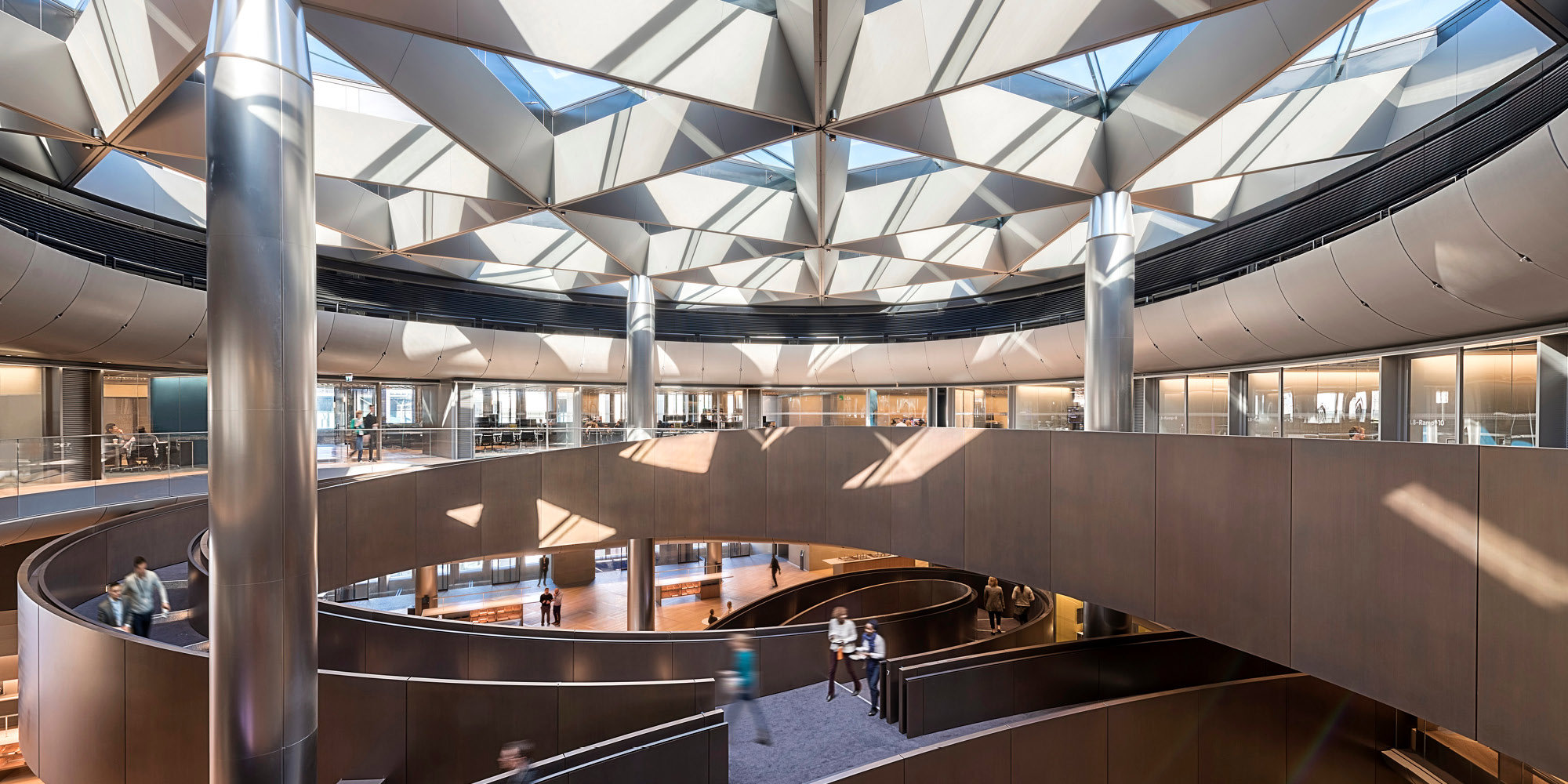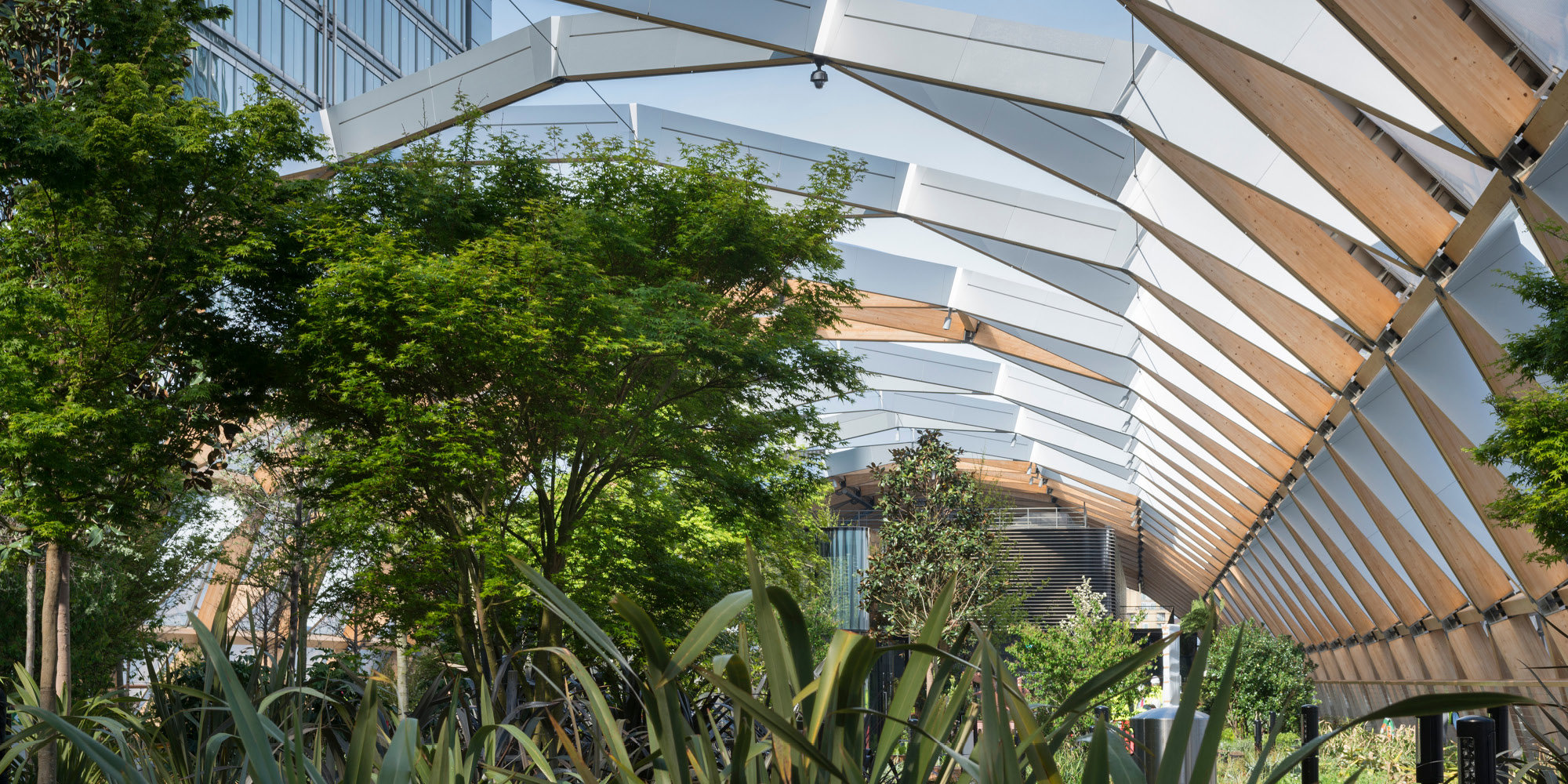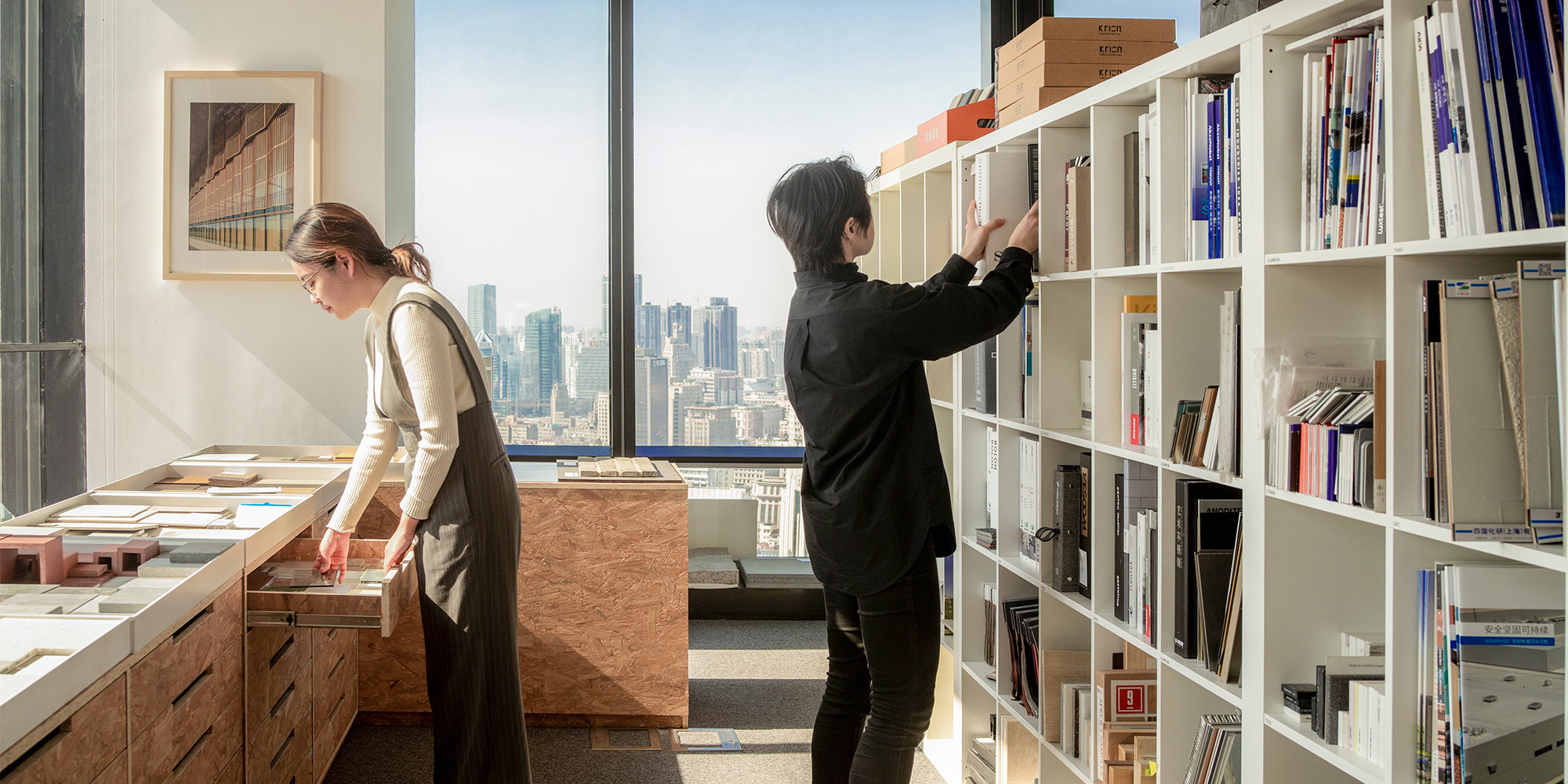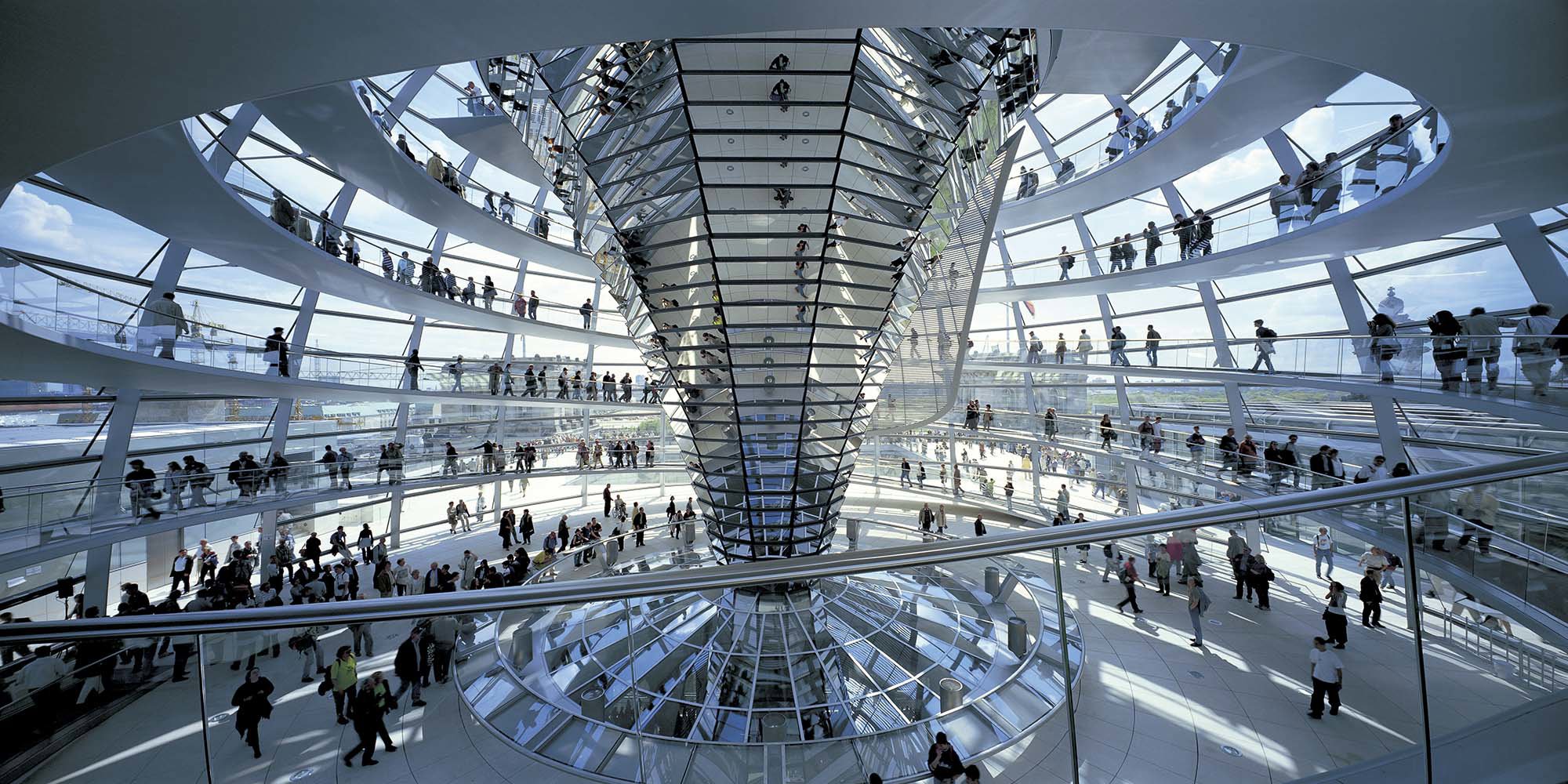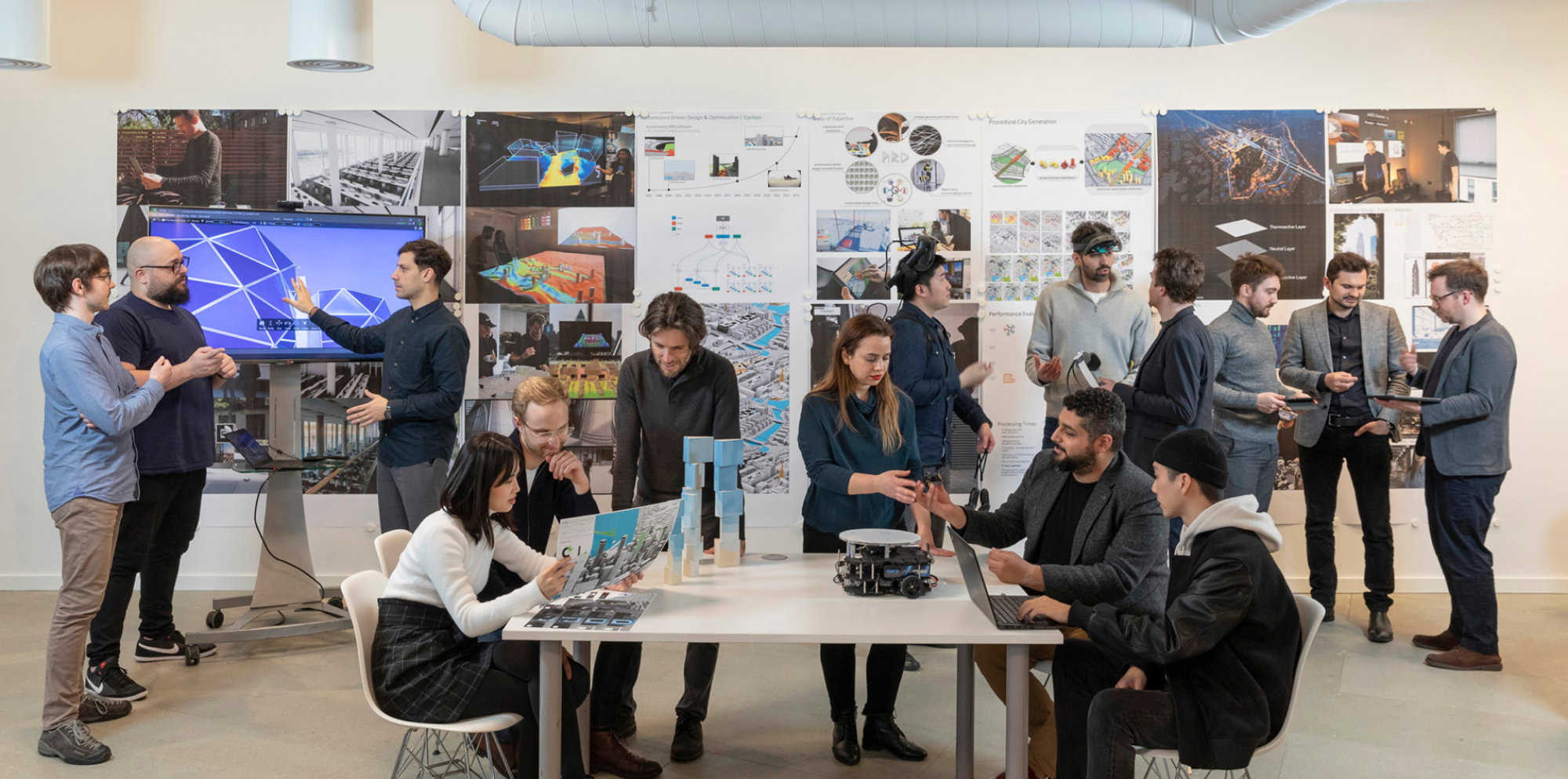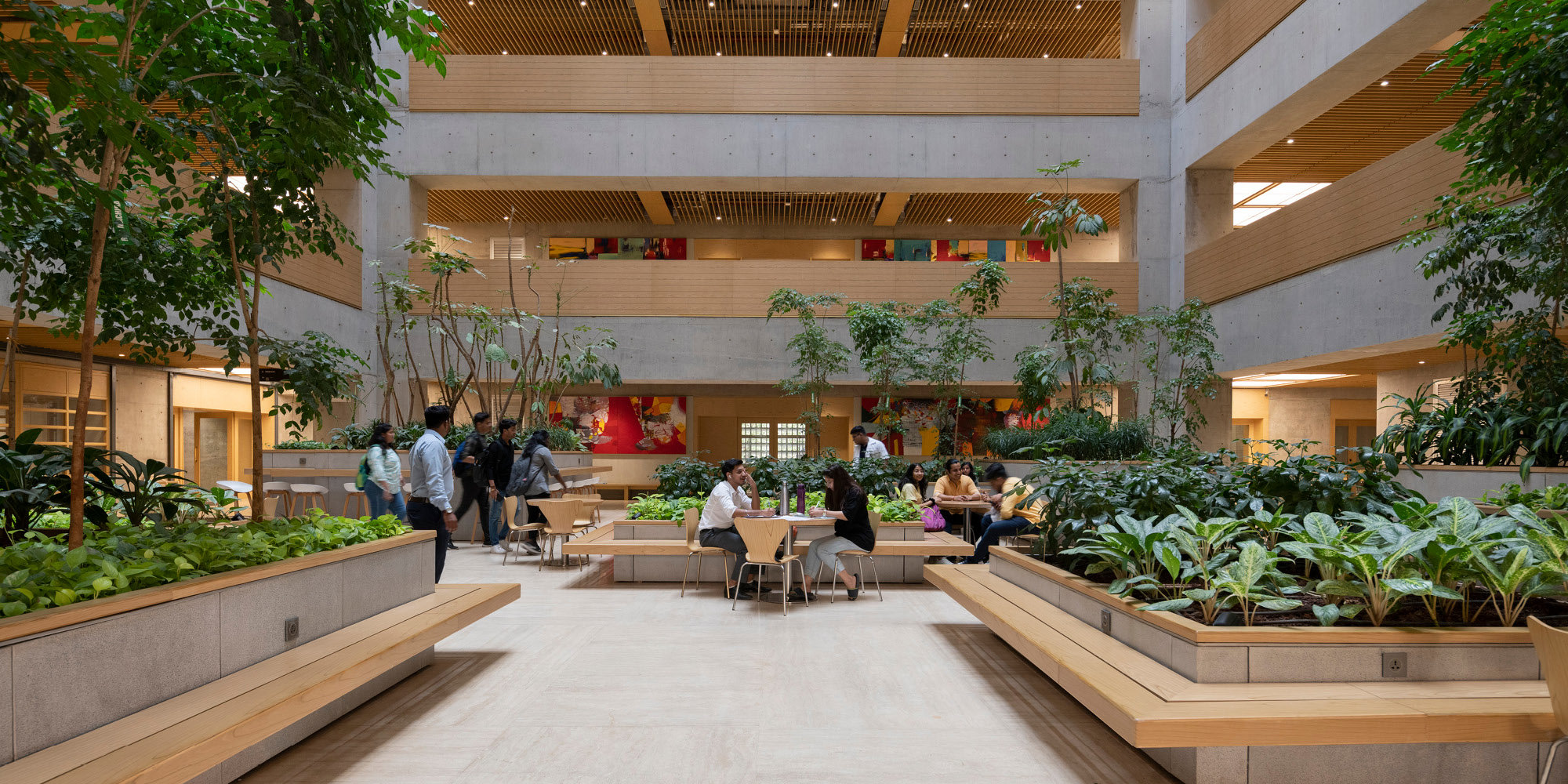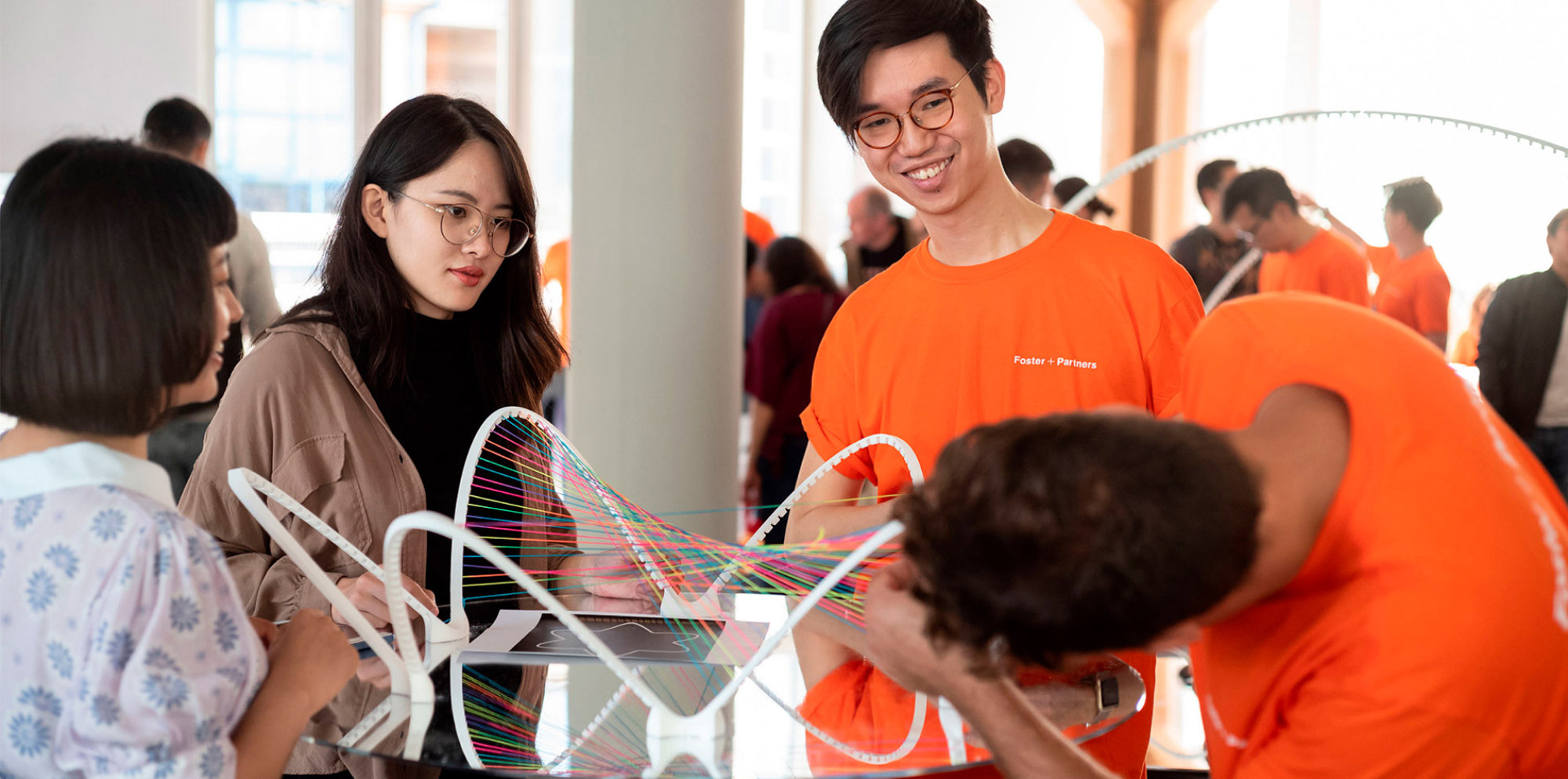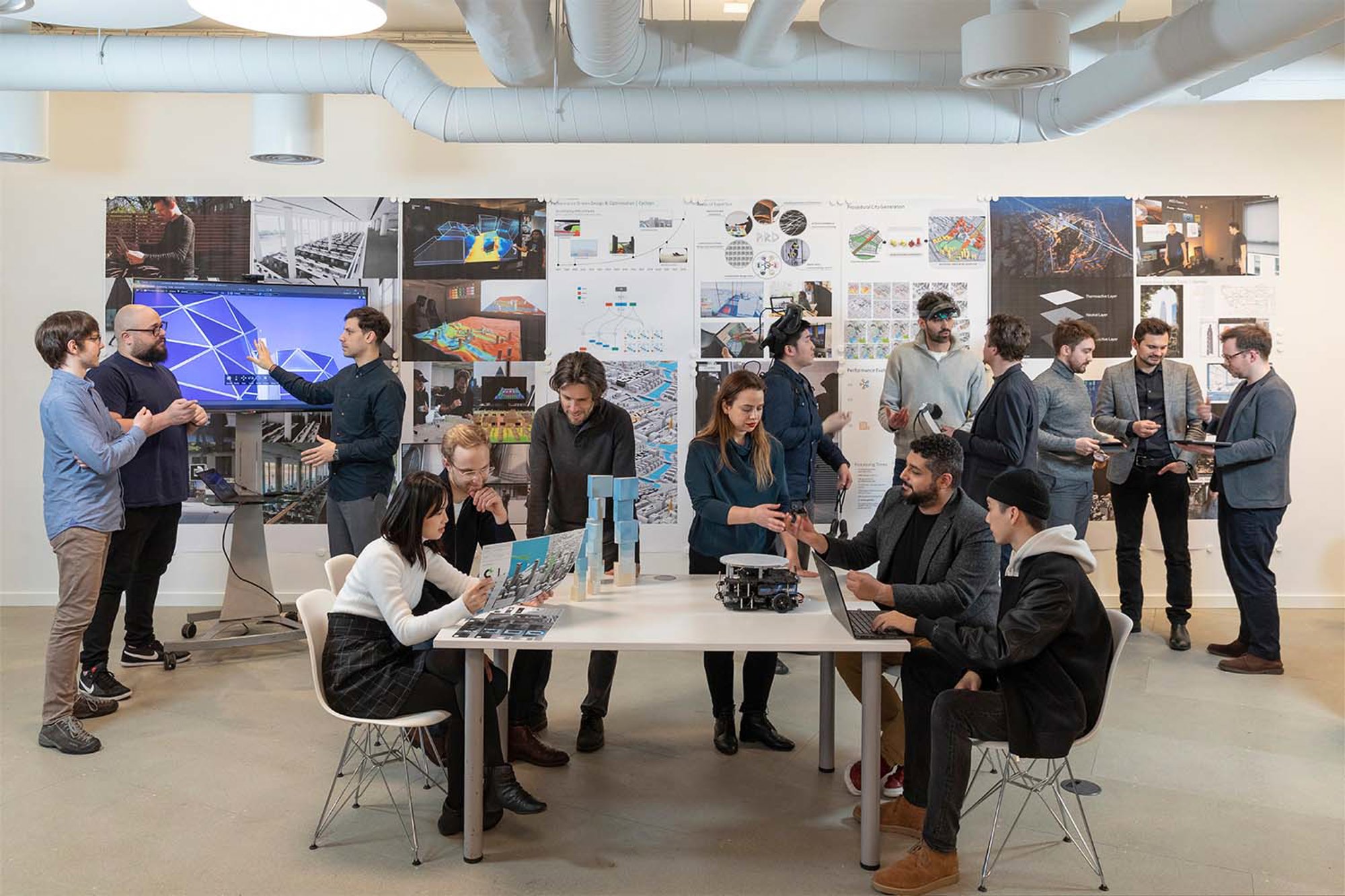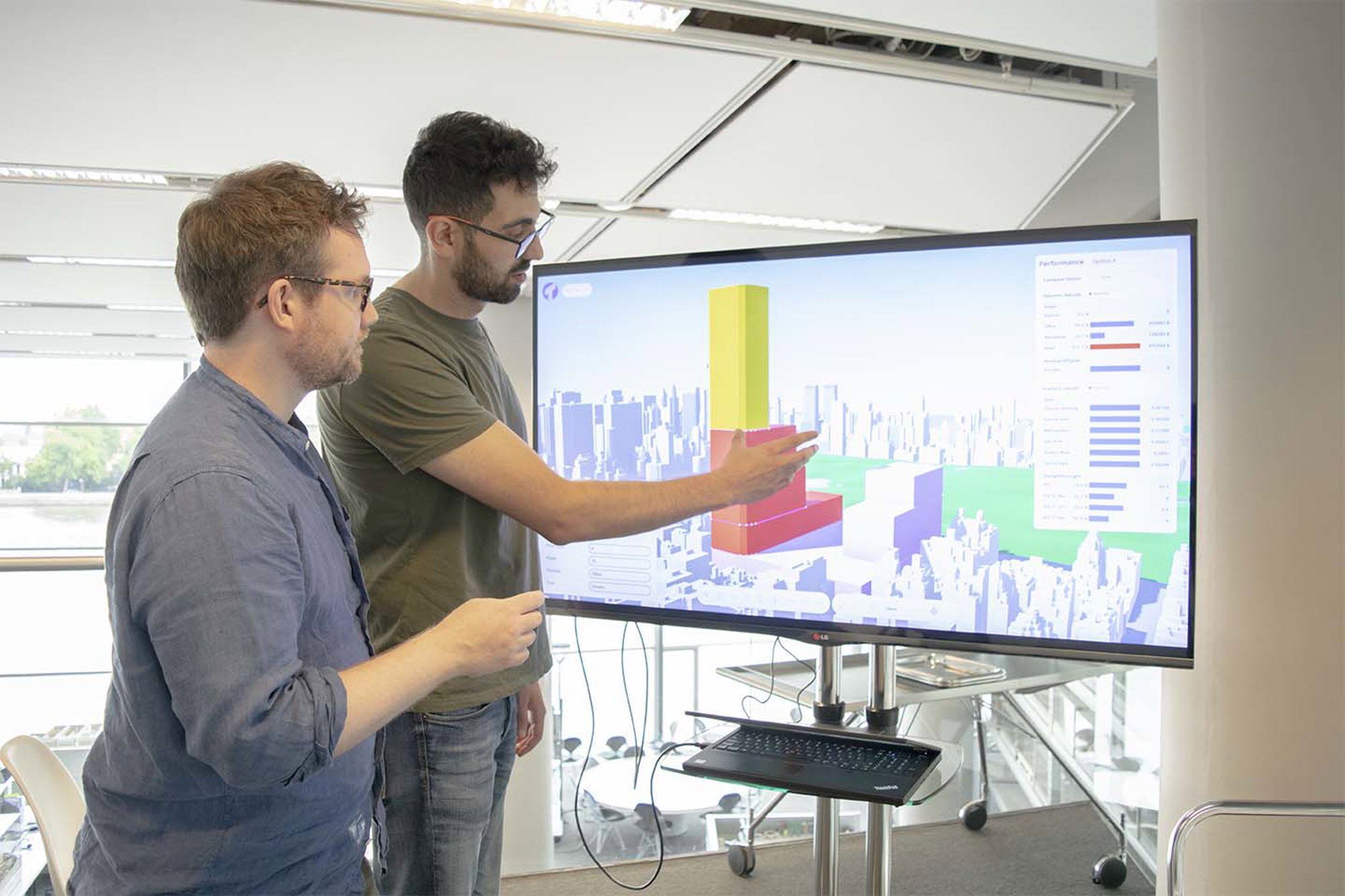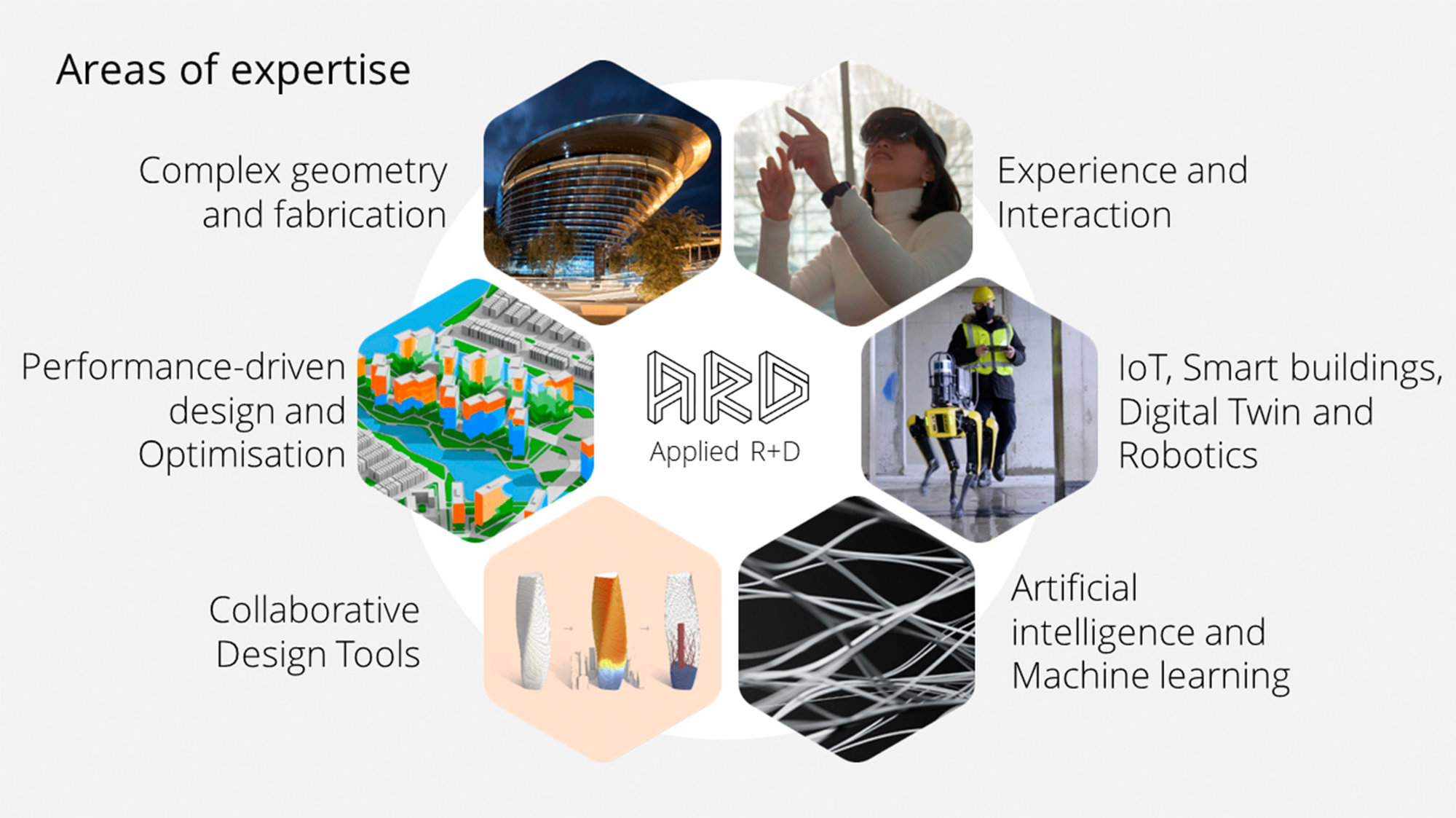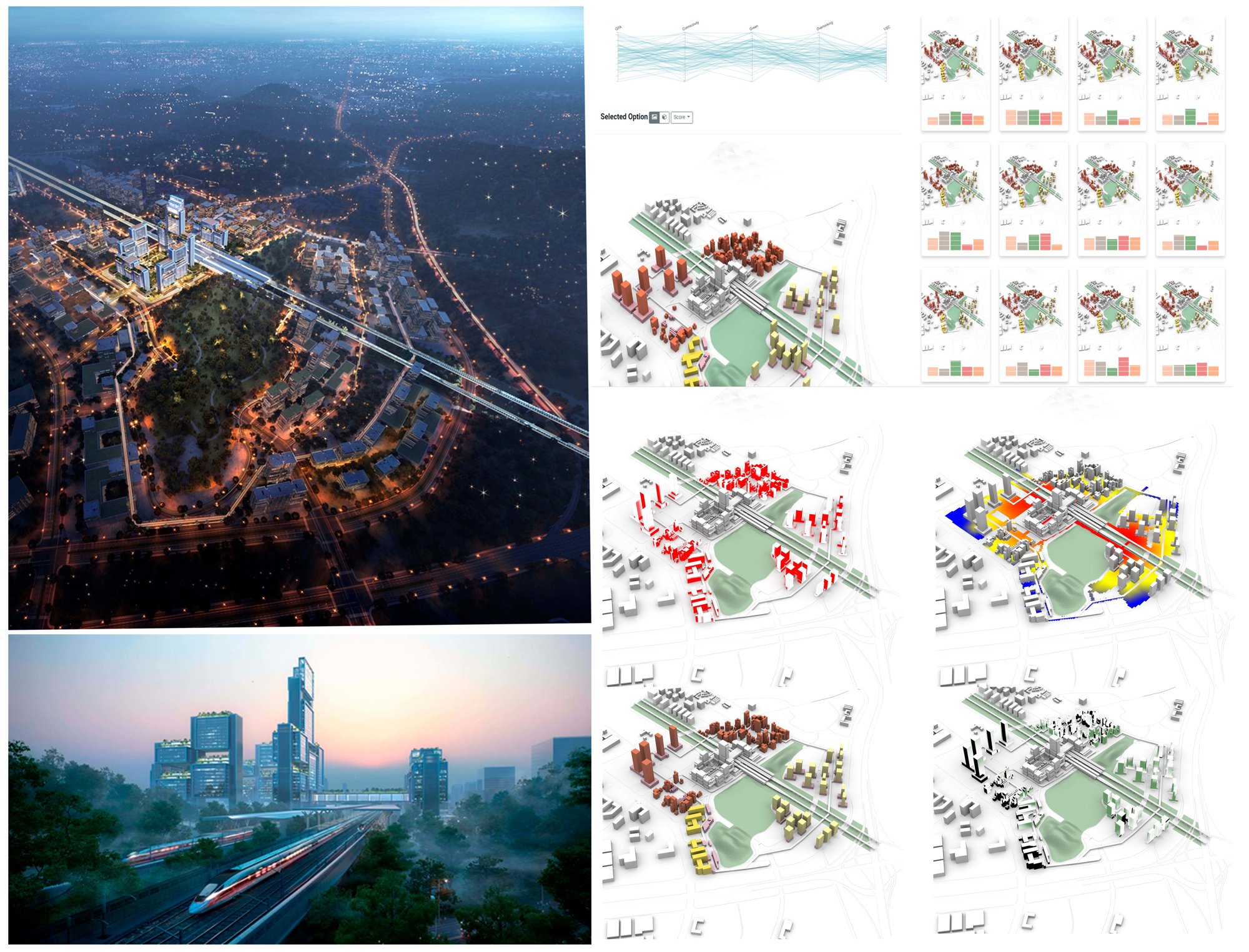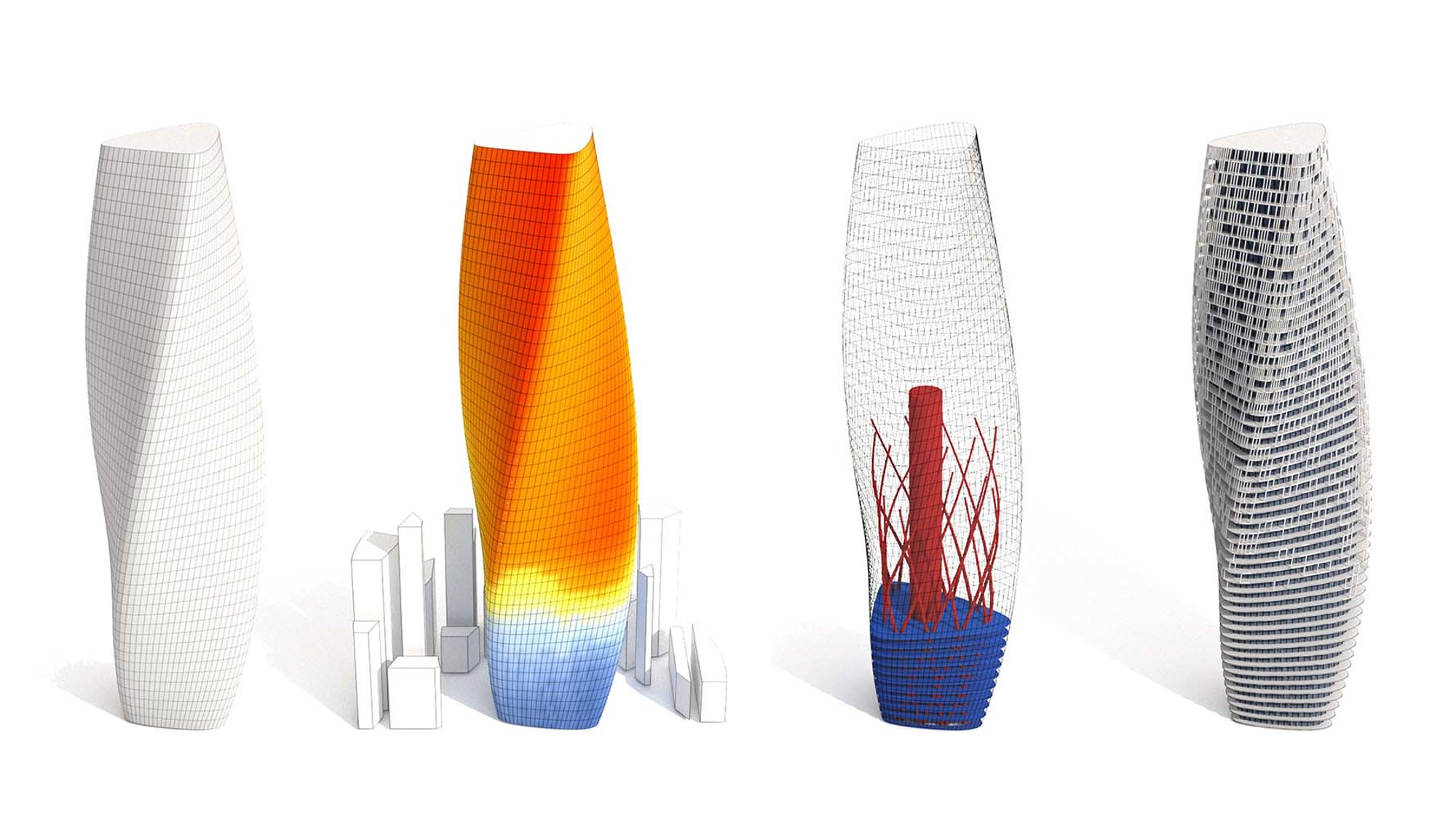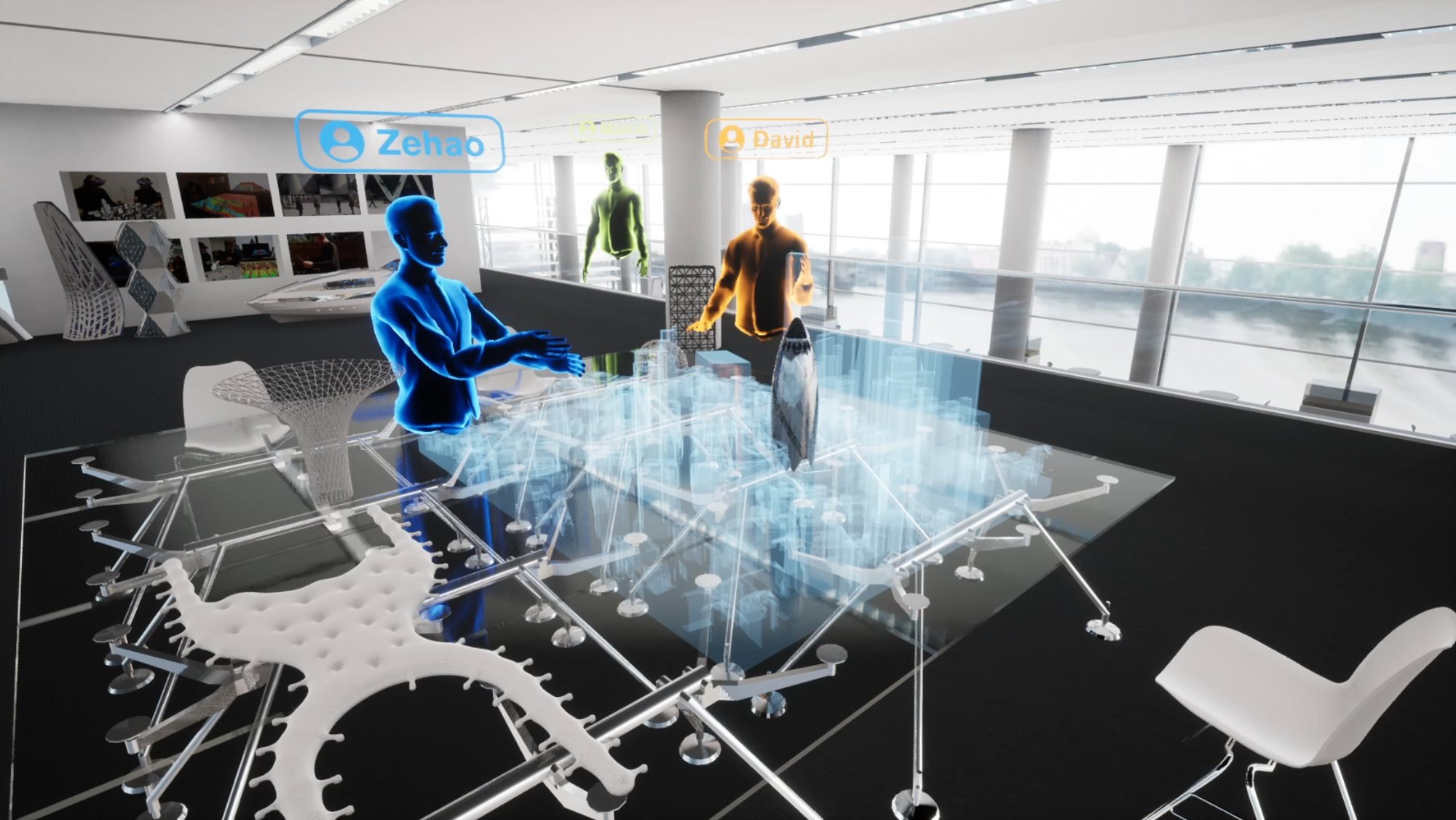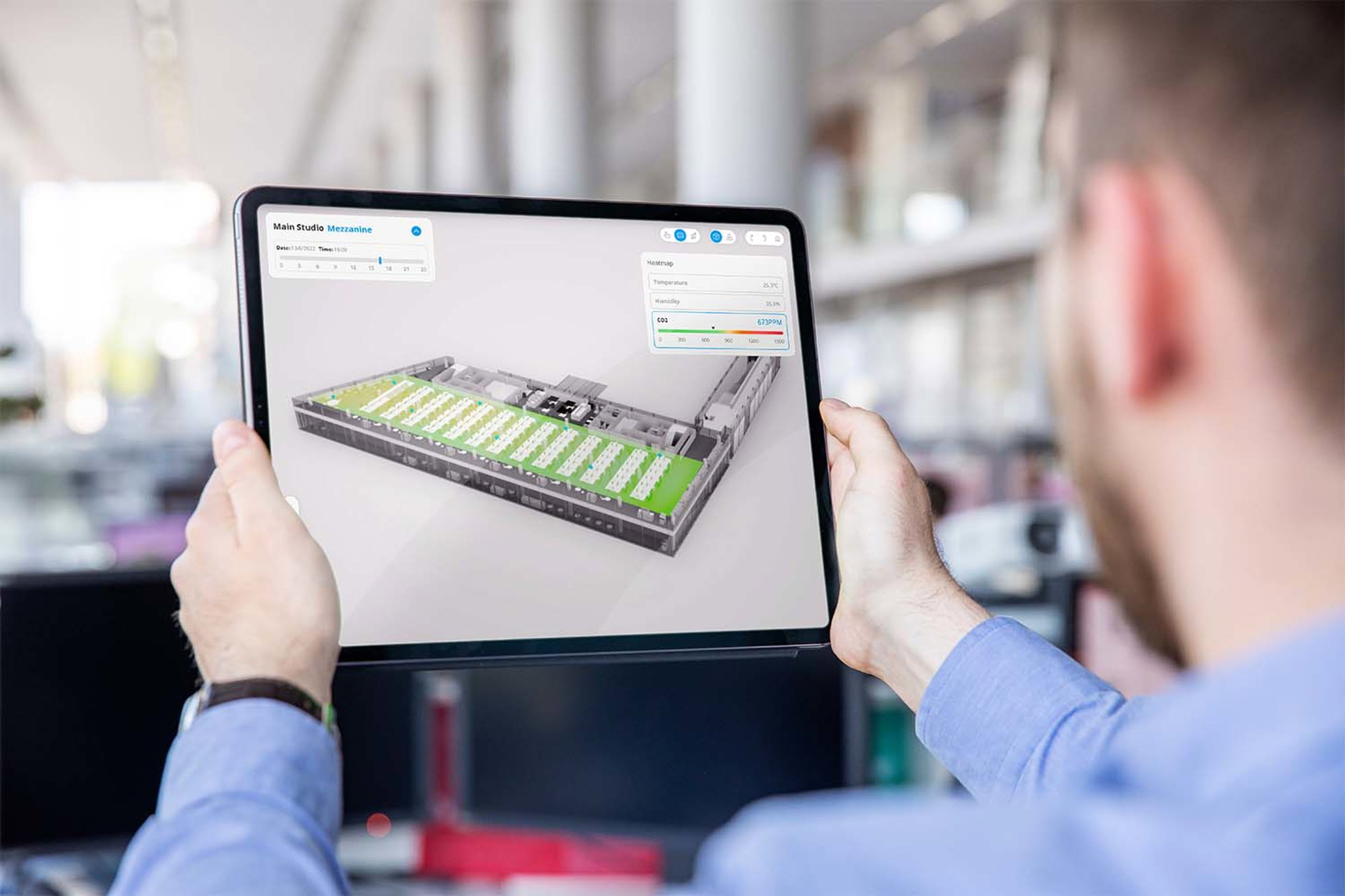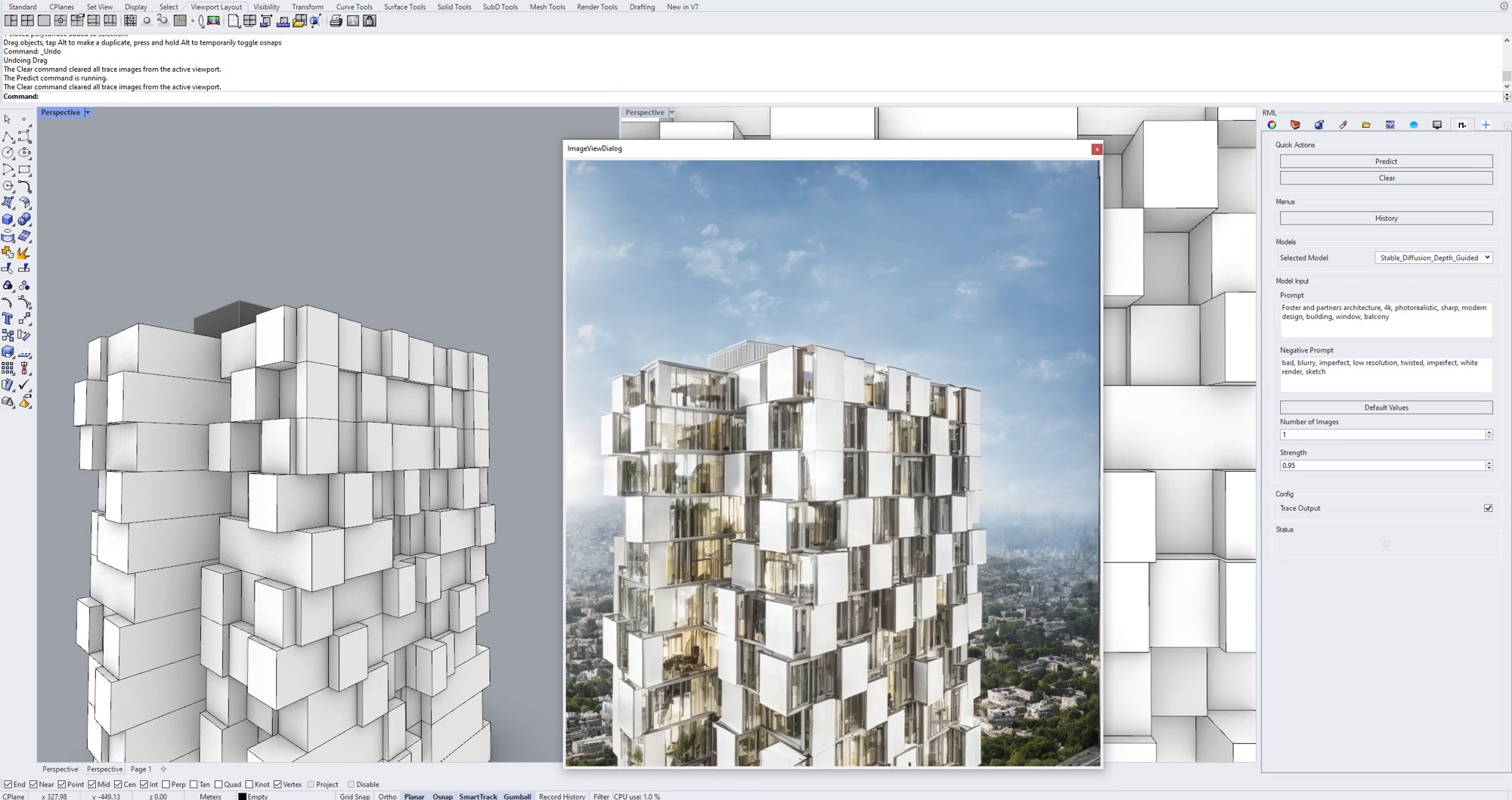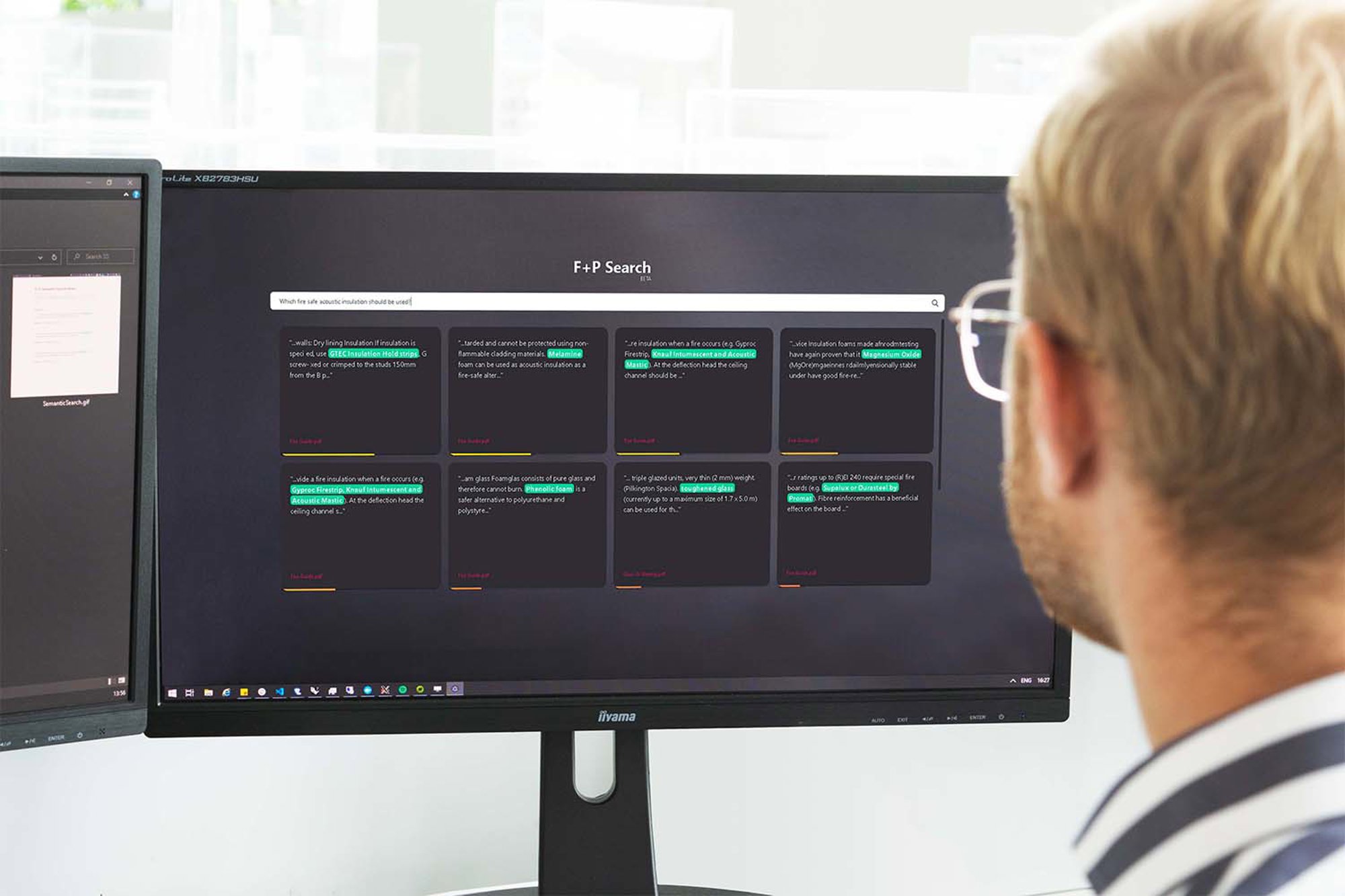Dominik Holzer’s research questions how the world’s most successful designers use technology to both disrupt and support their workflow. Meeting with the Applied R+D team at Foster + Partners, Dominik considers how the team’s technological expertise enhances and supports the design-led ethos of the practice.
3rd July 2023
Design, Technology, and the Team Between
Founding and Foundational
The computer first entered the architectural studio in the mid-1960s. With a shared interest in the then-nascent area of computer programming, a team at Skidmore, Owings & Merrill (SOM) was enlisted to provide computational feedback for repetitive tasks that benefitted design optimisation.1 A few years earlier, engineers at Ove Arup had been struggling to resolve the geometry of Jørn Utzon’s Sydney Opera House roof shells ‘by hand’. They leased a single computer the size of an entire room in the basement of a building near their London headquarters and, alongside researchers at Southampton University, wrote custom scripts that would resolve the roof’s fabrication and construction issues. That same decade, Norman and Wendy Foster founded Foster Associates from their flat in Hampstead.
The Fosters worked there briefly before moving to Fitzroy Street, then Covent Garden, and then Great Portland Street, in ‘an office with automatic sliding doors, and a raised metal floor – the kind of thing that, in those days, you only saw in clean rooms built for mainframe computers.’2 In an industry still dominated by drawing boards, trace, and Letraset, the computational era of design was beginning to take shape.
Despite its tech aesthetic, Foster’s young practice did not yet have the means to invest in an office computer – or hire computer programmers – like the then-long-established SOM and Arup. However, Foster was acutely aware of a future in which this would soon be achievable. He and Wendy established the studio with a determinedly democratic approach to different disciplines: ‘It was the integrated nature of the design team that he created in the 1970s – bringing in key characters such as environmental engineer Loren Butt – that allowed Foster to devise buildings for Willis Faber & Dumas and the Sainsbury Centre for Visual Arts, in which space and structure, services and skin were considered holistically.’3 The pay-off came quickly. For the practice of design technology, Foster Associates – now Foster + Partners – soon became prominent. Complex geometric problems were solved programmatically, for example, in the design of the roof of the British Museum’s Great Court (supported by – among others – Chris Williams and Buro Happold), and as part of the conception of the shape of the tower at 30 St Mary Axe.
Today, the use of digital tools in architectural practice is widespread. Many well-known design firms have formed groups to complement their design approaches with a tool ecology that supports a range of needs – from early-stage concept design all the way to project handover and management. But perhaps what makes Foster + Partners’ technological approach all the more unique, is that they have, and continue to, set a precedent for including technological expertise at key moments, right at the heart of the design process.
A Point of Convergence and Distinction
The integrated approach to design that has defined Foster + Partners from the beginning is reflected in the arrangement of its practice, both physically, through its enterprising and campus-like studios in Battersea, and communally, through its assembly of structural and environmental engineering teams; urban, landscape and industrial designers; model makers; illustrators; graphic designers; anthropologists; mathematicians and more.
A cutting-edge approach to technology is a consistent theme among all these disciplines, but this article is primarily focused on one team – the Applied R+D (research and development) team.
The Applied R+D team’s value comes from simplifying complex tasks and allowing design teams to expand on their capabilities in an intuitive way, thereby lifting the skills across the practice altogether.
As part of my research for a book, Design Technology in Contemporary Architectural Practice – and this feature – I had the pleasure of spending a few hours with the Applied R+D team, where I spoke to their members to find out about the team’s history, their main assignments, their positioning within the practice, and the way they negotiate different domains of knowledge and information transfer to explore innovative design solutions, informed by technological advance. This was not my first encounter with the Applied R+D team; their work has been internationally known for many years. It appears now, though, that it has now reached a point of convergence and focus that sets its approach apart from most others in the industry.
But what does Applied R+D mean in practice? While Research may be self-explanatory, Development is often the forgotten component of R+D in architecture, with most focus aimed at resolving immediate project goals. In many design firms, strategic ambitions to advance research into systemic solutions easily get jeopardised by tight project timelines and budgets that only allow for narrow thresholds of expenditure that cannot directly be charged-back to a bespoke project budget. For applied research to become systemic and its development to yield substantial payback, it requires a constant and bi-directional conversation between designers and technologists. The group’s success is strongly tied to the openness and attitude of their colleagues at Foster + Partners. Indeed, Applied R+D means that group members have their design team colleagues as Alpha and Beta testers of their products, providing immediate and invaluable feedback on the usefulness and suitability of any software developed. As Associate Partner David Gillespie explains: ‘Embracing computational and forward-thinking approaches is in the DNA of the office in general.’
Thalia is one of the Applied R+D's team's latest performance-driven design systems, allowing people to design, evaluate and compare ideas through a single intuitive interface. Thalia offers a multitude of metrics powered by bespoke analysis tools, which designers can test their models against in a matter of seconds.
Until recently, the team recruited its members under the single title, ‘Design Systems Analyst’. However, these roles are evolving with the increased diversification of the team’s activities and concerns. Each member has a double vision, maintaining a specific focus and skillset while working with others across domains. As Partner Khaled Elashry put it: ‘There is a lot of cross-pollination in the team.’ The Applied R+D team’s work is deeply rooted in design technology proliferation and innovation, yet its value to the practice comes from simplifying complex tasks and allowing design teams to expand on their capabilities in an intuitive way, thereby lifting the skills across the practice altogether.
More than six decades on from the early uses of design technology at SOM and Arup, most teams in the architecture, engineering, and construction space are grappling with similar use-cases: harnessing digital tools and associated workflows to alleviate repetitive tasks and solving problems with high complexity (geometric or otherwise). However, the most important point of distinction I associate with the Applied R+D team at Foster + Partners is that the support they provide is not limited to problem-solving. Instead, the combined Applied R+D team’s tool infrastructure, workflow management, and personal input is geared towards growing opportunities for ‘decision support’ for designers in the practice to enrich their creativity. It is about using technology to help designers make the best choices via a sophisticated array of auxiliary feedback – whether on an urban, building, or even detail scale.
Six Connected Fields of Inquiry
Within an ever-evolving context, the Applied R+D team currently focuses their expertise in six areas: performance driven design and distributed computing optimization; collaborative design tools and interoperability; experience and interaction with extended reality (XR), including Virtual Reality (VR) and Augmented Reality (AR); complex and generative geometry (and fabrication); Digital Twins, robotics, and smart buildings and cities; and, finally, Artificial Intelligence.
These categories represent sites of development both within the group and across the practice. Applied R+D staff are not simply aware of the latest digital design tools, trends, and approaches; they harness this technology and actively craft pathways that connect disparate sets of information. As a result, the group often acts as a conduit of ideas and expertise across a broad range of stakeholders within Foster + Partners and the outside world. As Senior Partner Martha Tsigkari, Applied R+D’s Head and founding member, points out: ‘One certainty for us is that we are open to change, we are open to go outside our comfort zone, try new things, and see how all these disruptive technologies can be incorporated in our workflows. If you want to be an R+D team, and engage predominantly in applied R+D, you need to have a multi-layered focus, and you need to be able to go to different areas and decide what it is that you want to bring to the table.’
Performance and Innovation
As a designer, I was always intrigued by Foster + Partners’ ability to capitalise on prior project experience – innovating and ‘perfecting a detail or a design approach’ that might then re-emerge in different variations and evolutions across other projects. Like designers in the wider practice, the Applied R+D team draw both on a project’s unique context and a wider network of expertise to generate the best outcomes.
[Hydra] allows the user to create and run thousands of options of urban-scale models in a matter of hours and evolve them to better ones, based on the performance objectives set by the designers.
The Guangming Hub Masterplan, Shenzhen is one example of performance driven design being brought to an extensive urban project. Here, the Applied R+D team set up a parametric model to generate different typologies and connect those to their in-house distributed computing and optimisation tool, Hydra. Based on technology usually applied in the film industry, Hydra was hacked to process distributed, multi-objective optimisation in a fraction of the time typically used for similar processes. This allows the user to create and run thousands of options of urban-scale models in a matter of hours based on the performance objectives set by the designers. The options combine and trade-off different criteria such as area, connectivity, view quality, and daylight potential. Other criteria might include pedestrian movement, Return on Investment (ROI), user wellbeing, or embedded and operational carbon costs.
Since 2019, Hydra has powered early-stage design optimisation for over 50 mostly large-scale projects, generated more than 250,000 options, and run over 1.3 million simulations. Its use in the ongoing Guangming Hub Masterplan in Shenzhen, China, for example, has allowed thousands of customised design options to be generated, analysed and optimised.
At its core, Hydra is a design-exploration environment that gives the design teams pointers about which options are better than others. By interfacing with other Applied R+D products, such as Cyclops (which uses GPU computing for raytracing related simulations, like views or sunlight) and Hermes (a data exchange interface), it allows users to visualize objectives, filter through possible results, and pre-screen those that correspond best to preferences expressed by design teams.
Critical discernment is still important in these tech-heavy operations. As Associate Partner Marcin Kosicki explains: ‘Teams don’t react well when you give them a hundred good options. First you need to have an honest conversation about what it is they consider good. Based on their priorities, we select a few options, we present to them, and have a conversation.’
It is vital that Applied R+D team members take time to commune with and understand designers’ requirements. After all, the tools developed by the team are not isolated but part of an ecosystem. This is apparent in three main aspects: firstly, the tools that serve different purposes are nearly always connected so that data can fluidly be communicated across them; secondly, these tools need to be user-friendly, communicating information as efficiently as possible; thirdly, tools need to be customisable according to a project and its team. In some cases, feedback from the design teams occurs due to ad-hoc needs, in other instances, certain functionalities inherent to a tool are the result of years of research. One such tool is Cyclops which is used for view-quality analysis (and now frequently for raytraced-based environmental analysis as well). Initially formulated as part of a team member’s doctoral research, it has greatly advanced, using feedback from Foster + Partners’ environmental engineering and design teams to assist them with their work.
From Interoperability to Virtuality and Digital Twins
The group’s strong focus on developing specialist products for design teams makes it difficult to rely on off-the-shelf software. Instead, they operate with the end-user in mind. Applied R+D members configured and maintain their bespoke application Hermes, for example, to better fit with their cloud infrastructure and other software products. Hermes also best suits their needs for interoperability, allowing people, disciplines, and computers to fetch and exchange geometric and non-geometric data (in keeping with typical workflows). Hermes acts as an efficient pipeline for quick and robust information exchange with a focus on the connections needed by design teams. To enhance productivity, the tool not only exchanges information on the most recent design iterations but also provides quick access to previous versions.
Hermes exchanges design data in real-time across different applications, computers, disciplines, and sites. Design iterations and metrics are rapidly, seamlessly, and securely distributed to all relevant teams over the cloud without relying on static models and traditional means of communication. Pictured here are four iterations of the Lusail Towers project currently under construction in Qatar.
Consolidating their twenty-year experience in using VR and then AR, and informed by Human Experience Design, the Applied R+D team supports the design and planning teams by applying XR to create multi-user scenarios for collaborative design. This assists not only the designers but their clients as well. By recreating physical design reviews and mock-ups via their XR tools, such as Glaucon, stakeholders could join reviews remotely – greatly reducing the carbon emission of international travel without compromising on the availability of a highly realistic immersive site.
Glaucon is an XR experiential and collaboration tool which allows real and virtual spaces to be brought together for hybrid spatial experiences and design reviews. Users can load in their own content and bring others into the experience. The environment can be entirely virtual, situated on physical sites or a hybrid of the two. Virtual mock ups can be created and located on live physical or virtual environments on a size, scale and quality surpassing commercially available software.
Foster + Partners have experienced an increase in client demand for data analytics for their existing assets. Clients have increasingly wanted to understand, through associated building information, the long-term performance of their assets across social, environmental, and financial metrics. In a complex collaboration with the BIM, Workplace Consultancy, Facilities, and Visualisation teams, the Applied R+D team generate Digital Twins that are used during operational as well as design phases (with the former frequently informing the latter). In fact, the team spent considerable time setting up a Digital Twin for their own London campus to connect previously distinct information systems (such as Internet of Things [IoT] sensing data for checking air quality) and to automate processes for assessing data and generating reliable predictions.
Foster + Partners’ Campus Twin is a functioning digital twin — a digital copy of the London headquarters that grows and changes along with the physical premises that it mirrors. The Campus Twin stores and displays up-to-date spatial information and current and historic data about conditions within the space including temperature, humidity and CO2 levels.
Deep into Deep Learning: An operational approach to AI
AI is currently on everyone’s mind. The introduction of machine learning to design practice seems both promising and – for many people – alarming. Where does a forward-thinking studio such as Foster + Partners pitch its AI approach? What role does the Applied R+D team play in the proliferation of associated processes and the integration of these processes alongside other digital applications they established over the years?
In short: the Applied R+D team aims to avoid being limited by the seductiveness of more ‘superficial’ AI outputs (such as image or render creation) and instead looks for operational and design uses that are grounded and attuned by the inefficiencies within the business or the industry in general. Both operational and design issues can be addressed with the aid of AI. The Applied R+D team’s Associate Partner, Sherif Eltarabishy, proposes that Foster + Partners could use AI to create predictive models that can be used for business insights. ‘The Applied R+D team helped to create an in-house search engine that allows staff to ask questions (such as: what is the best ceiling insulation material to use?) and get answers back with sources and/or useful information about recent code changes.’ This tool is based on feedback from Foster + Partners’ support teams and the guidelines they established for different building types and locations over fifty years.
Building on the latest advances in Natural Language Processing and Large Language Models, the Applied R+D team deploy custom search experiences for different use cases. A Semantic Question Answering system, for example, allows designers easy access to information in the practice’s up-to-date design guidelines repository.
The explosion of AI applications and their increasing demand for data has recently made the Applied R+D team rethink how data is being stored and archived practice-wide. It triggered them to investigate how different tools used within their team generate data, to allow them to query information from those tools more easily and quickly down the line. Still, there is a lot of demand from design teams to use AI for everyday tasks, and the Applied R+D team’s input guarantees that its use remains regulated and supported within the studio. For the moment, the position of AI within the practice is under sustained consideration and its usage is – as it is for its developers – a learning process.
Integrated Focus, Broad Horizons
Perhaps it is this emphasis on learning across disciplines that allows such adaptable teams to thrive. Partner Adam Davis, Deputy Head and founding member of Applied R+D, reflects on the trajectory of the group: ‘Looking at business challenges that are, to some extent, independent of design challenges is new ground for us. We have taken some of the expertise that we developed as a team (originally much with the purpose of addressing design) but we do now find that some technologies that are applicable to design actually have even broader horizons.’
Evidently, we are far from the awkward, clunky computer rooms of the 1960s. Rather than collate an exhaustive summary of such a leap, this article offers a view into the multitude of design technology activities that Foster + Partners is involved in. Much can be learned from the practice’s integrated approach, particularly how the Applied R+D team builds on and expands existing knowledge across disciplines. I’m excited to see what we will see emerging from the group over the next five years, but with the current speed of development, I’d do better to check in again twelve months from now!
References
- Anna Lui: Data Dreams: The Computer Group and Architecture by Spreadsheet, 1967-84.
- Deyan Sudjic, ‘Foster in Future’, Norman Foster Works 6, Prestel (2014).
- Ibid.
*The cover image for this article was made with Midjourney, an artificial intelligence program.
Author
Dominik Holzer
Author Bio
Dominik Holzer (PhD, MArch, MSc) is an Associate Professor in Digital Architectural Design at the University of Melbourne. With over 20 years of work experience in the architectural field, Dominik specializes in the strategic application of technology for the design, delivery, and operation of built assets. His book, Design Technology in Contemporary Architectural Practice, is launching this July.
Editors
Tom Wright and Clare St George
